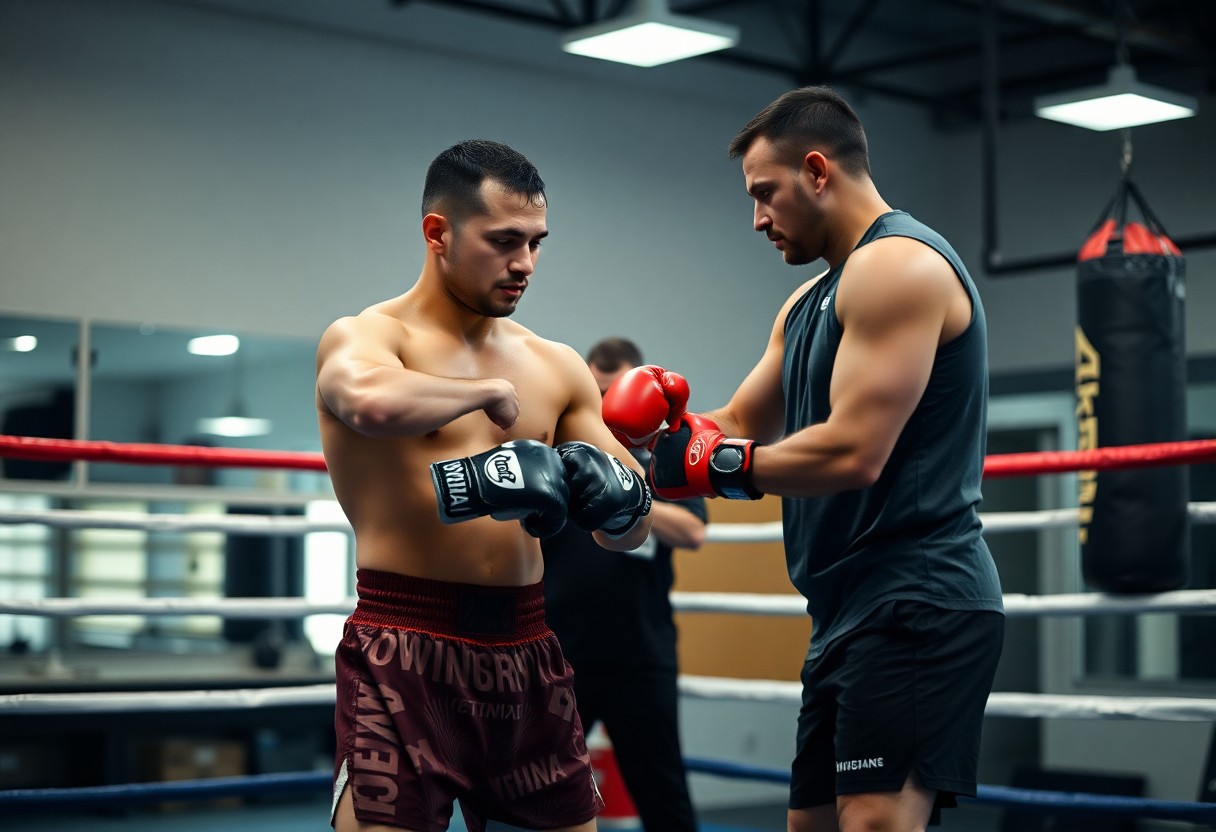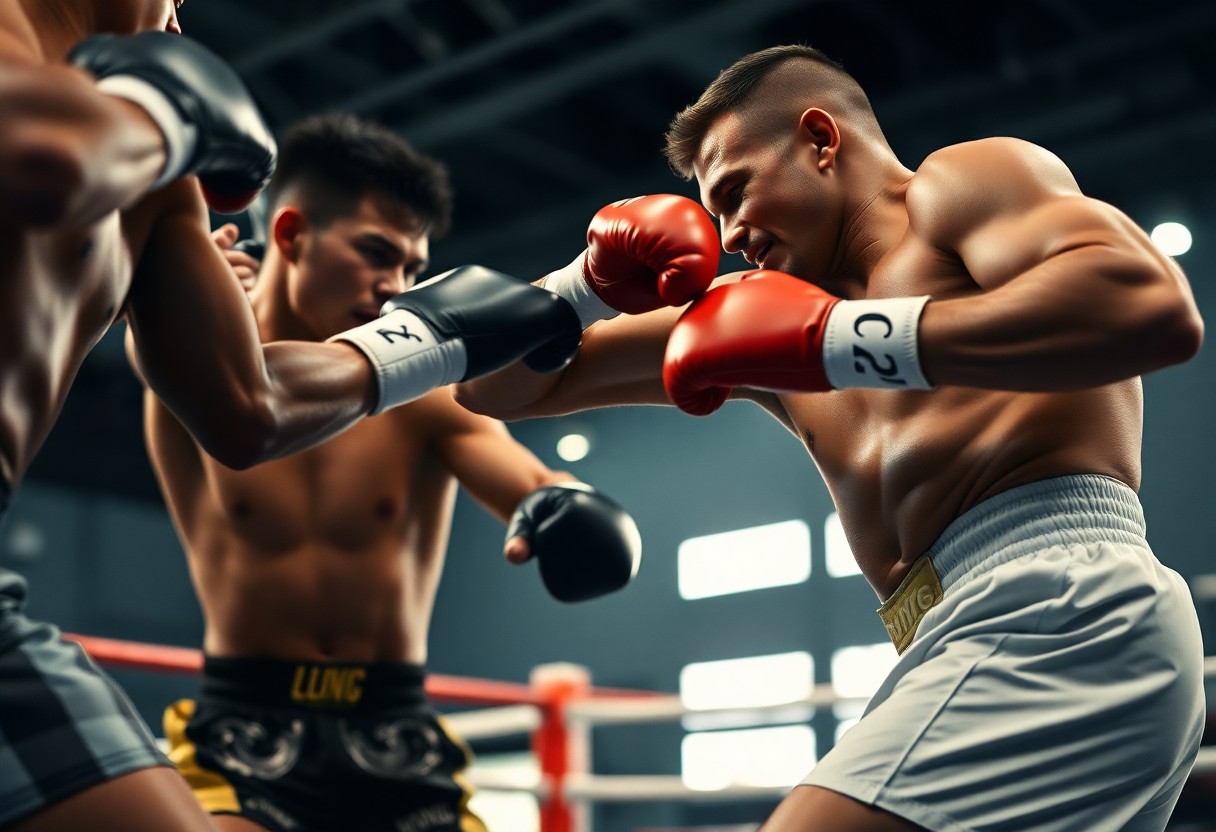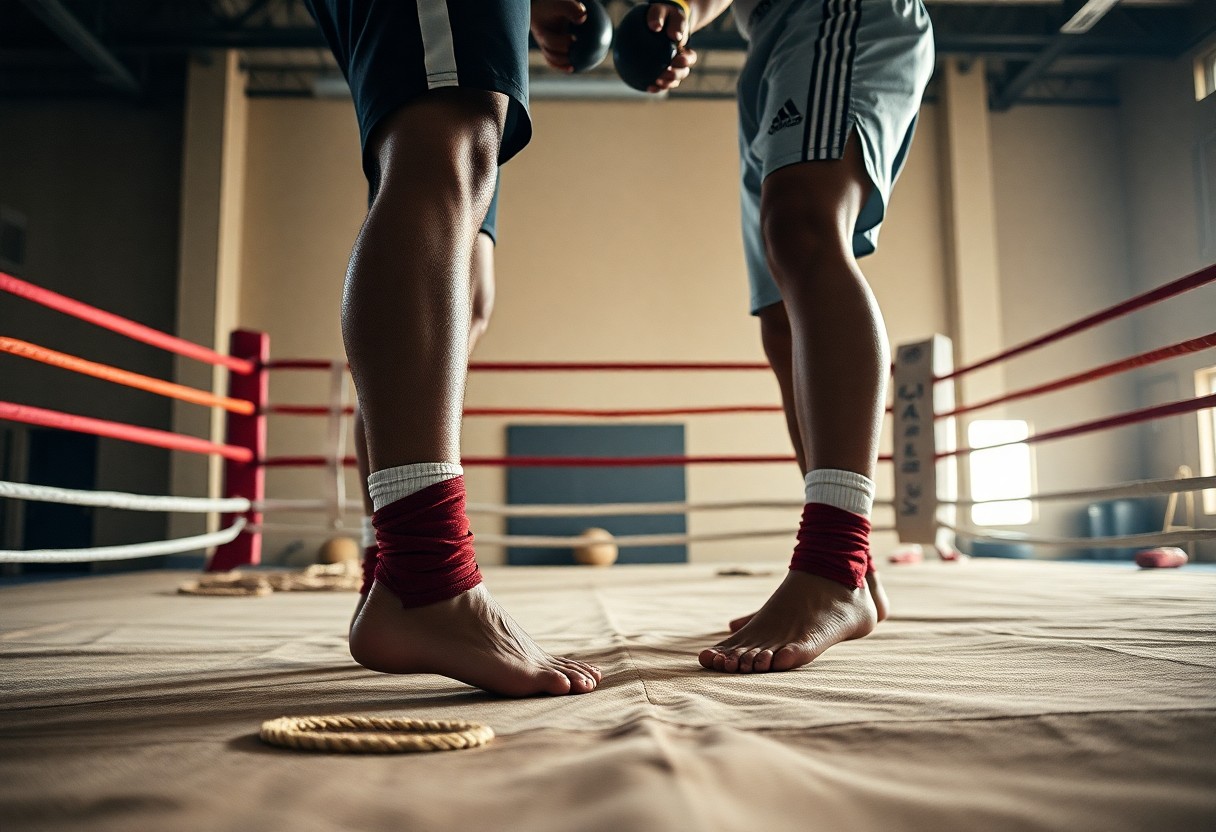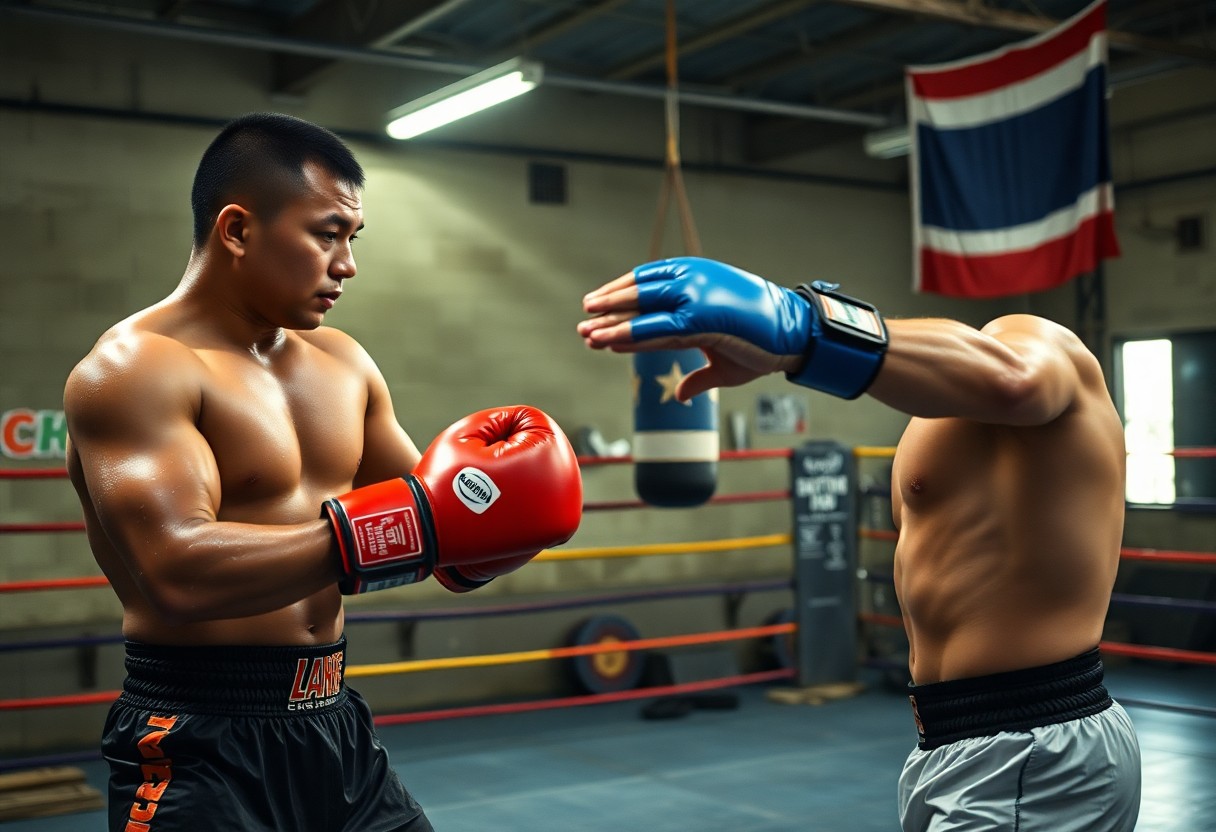Most of the legendary figures in Muay Thai have not only showcased their incredible skills in the ring but also transformed the perception of the sport worldwide. Through their dedication, spirit, and unmatched techniques, these fighting icons have paved the way for future generations, promoting discipline and respect within the Muay Thai community. This guide examines into the impactful careers and legacies of these athletes, showcasing how their contributions have elevated Muay Thai to a globally respected martial art.
Types of Famous Muay Thai Fighters
Famous Muay Thai fighters can be categorized into various types, each contributing uniquely to the sport’s evolution. These include traditional fighters who uphold the age-old techniques, and modern champions who innovate and elevate the sport on global platforms. Each category showcases distinct fighting styles, cultural significance, and achievements that have marked Muay Thai’s rich history.
- Traditional Fighters
- Modern Champions
- Technique Innovators
- Cultural Icons
- International Ambassadors
After examining these categories, we can see how each has played a role in the sport’s growth and recognition worldwide.
Traditional Fighters
Traditional fighters are the backbone of Muay Thai, often trained in family traditions or at local gyms in Thailand. They embody the sport’s rich heritage through techniques that have been passed down for generations. Notable examples include legendary figures such as Samart Payakaroon and Saenchai Sor Kingstar, whose mastery of classic styles showcases the art’s beauty and depth, preserving the cultural essence of Muay Thai.
Modern Champions
Modern champions have taken Muay Thai to unprecedented heights, competing internationally and often appearing in mixed martial arts (MMA) events. These fighters, like Buakaw Banchamek and Yodsanklai Fairtex, bring innovative tactics and a diverse skill set that push the boundaries of traditional techniques. Their global influence and commercial appeal have attracted new fans and established Muay Thai as a dominant force in combat sports.
Modern champions not only excel in the ring but also serve as advocates for Muay Thai’s international promotion. Fighters like Petrosyan and Rodtang are blending striking techniques from various disciplines, showcasing a versatility that appeals to a wide audience. Their participation in high-profile events and collaborations with organizations like ONE Championship emphasize the sport’s evolving nature. With a strong social media presence, these champions reach millions, inspiring a new generation of fighters and fans to embrace Muay Thai’s rich legacy while shaping its future.
Key Factors That Shaped Muay Thai
The evolution of Muay Thai can be attributed to several key factors that have influenced its development through history. Notably, its cultural roots have played a significant role, intertwining with Thailand’s traditions and society. Additionally, the introduction of modern training techniques and the influence of international competition have transformed the way fighters prepare and compete. Another imperative aspect is the media portrayal, which has helped to popularize the sport beyond Thai borders. Recognizing these factors is vital in understanding how Muay Thai has become a globally respected martial art.
Cultural Influence
The cultural tapestry of Thailand is deeply woven into Muay Thai, with the sport reflecting local customs and values. Traditional events held during festivals and ceremonies often feature Muay Thai bouts, showcasing the sport’s significance in Thai culture. Additionally, the deep respect for trainers and elders within the sport fosters a sense of community and heritage, which remains crucial for aspiring fighters.
Training Techniques
Training techniques in Muay Thai have evolved dramatically, blending traditional methods with modern sports science. Fighters engage in diverse regimens including pad work, sparring, and strength conditioning, aimed at optimizing performance. Many gyms now incorporate cross-training elements from disciplines such as boxing and wrestling, enhancing the versatility and adaptability of fighters. These comprehensive approaches contribute significantly to the development of effective techniques.
Modern training facilities often utilize strategies like video analysis and targeted fitness assessments to enhance performance. The rigorous training schedules typically include multiple daily sessions focusing on technical skills, conditioning, and nutrition. As a result, today’s fighters integrate aspects of strength and conditioning, mental preparation, and tactical planning into their routines, creating a well-rounded athlete prepared for any challenge. This holistic approach underscores the professionalization of Muay Thai and reflects how fighters continuously strive for excellence in their craft.
Step-by-Step Evolution of the Sport
| Era | Key Developments |
|---|---|
| Ancient Times | Origins in Military Training, introduction of basic strikes |
| 19th Century | Formalization of rules, emergence of organized competitions |
| 1920s | Promotion of Muay Thai outside Thailand, international interest grows |
| 1980s | Introduction of Western boxing influences, hybrid styles develop |
| 21st Century | Globalization of Muay Thai, increased media exposure and professional leagues |
Historical Milestones
Historical milestones mark significant phases in Muay Thai’s development, such as the formal adoption of the Raja Muay Thai Association in 1929, which standardized rules. This organization played a key role in promoting Muay Thai as a recognized sport, leading to significant competitions and the inclusion of the sport in international events. The 1981 match between Samart Payakaroon and Nai Khanom Tom epitomized the sport’s growing global appeal, solidifying Muay Thai’s reputation on the world stage.
Major Rule Changes
Major rule changes have profoundly influenced Muay Thai’s evolution, transitioning from traditional practices to a structured competitive sport. The introduction of elbow and knee strikes in the ring marked a significant shift, enhancing the tactical nature of fights. Additionally, the establishment of weight classes in the mid-20th century aimed to increase safety and fairness, attracting a wider range of fighters and promoting professionalism.
The changes in rules have shaped the fighting landscape and the way athletes prepare for competitions. For instance, the enforcement of strict safety equipment regulations, such as mouthguards and gloves, has minimized injuries during bouts. Furthermore, the implementation of scoring systems based on techniques, strike effectiveness, and ring control has refined judgment criteria, allowing judges to evaluate performances more systematically. These adaptations have contributed to more exciting and competitive matchups, fostering a vibrant and dynamic global community within Muay Thai.
Tips for Aspiring Muay Thai Fighters
- Training consistency is vital.
- Seek a knowledgeable coach for guidance.
- Nutrition impacts performance significantly.
- Practice mental toughness alongside physical skills.
- Engage in sparring to test skills in real situations.
Knowing the right steps can significantly enhance your journey in Muay Thai.
Choosing the Right Gym
Locating a reputable gym is necessary for aspiring fighters. Look for a facility that boasts experienced trainers proficient in Muay Thai and offers a supportive environment. Visiting potential gyms allows you to assess their culture, training programs, and class sizes, ensuring that you find a place that aligns with your goals and learning style.
Focusing on Technique
Technique serves as the foundation for all Muay Thai skills. Emphasizing the correct execution of strikes, clinch work, and footwork allows fighters to maximize their efficiency and minimize injuries. Consistent practice of fundamental movements leads to muscle memory, making advanced techniques easier to perform under pressure. Quality is always more important than quantity; investing time in refining your technique will pay off in sparring and competitive scenarios.
By prioritizing the details, such as balance during kicks and the precision of punches, aspiring fighters can build a strong technical repertoire. Great fighters often distinguish themselves through their mastery of basic moves executed with power and poise. Additionally, filming your training sessions or seeking feedback from experienced fighters and coaches can uncover areas for improvement, ensuring you remain focused in developing a well-rounded skill set in Muay Thai.
Pros and Cons of Fame in Muay Thai
| Pros | Cons |
|---|---|
| Increased sponsorship and financial support | Intense scrutiny from media and fans |
| Greater public visibility and popularity | Pressure to perform consistently |
| Opportunities for global recognition | Potential for burnout and stress |
| Influence on the sport’s growth | Loss of privacy and personal life |
| Ability to mentor young fighters | Expectations of being a role model |
| Access to elite training programs | Jeopardy of corporate sponsorship conflicts |
| Networking with key figures in sports | Risk of injury overshadowing careers |
| Participation in high-profile events | Challenges of maintaining mental health |
| Creating legacy and impact | Heightened competition among peers |
| Building community around the sport | Potential for negative media attention |
Advantages of Celebrity Status
Fame in Muay Thai offers substantial financial rewards, as popular fighters attract lucrative sponsorships and endorsements. This elevation in status not only enhances their own brand but also contributes significantly to the sport’s global visibility. High-profile fighters often draw larger crowds to events, fostering an environment where novice fighters gain exposure and opportunities that may otherwise remain unavailable. Moreover, renowned athletes can mentor youth, inspiring the next generation and promoting the positive aspects of Muay Thai.
Disadvantages and Pressure
Despite the allure of fame, it comes with a set of challenges that can weigh heavily on athletes. The constant public scrutiny can lead to immense pressure to maintain peak performance, as any loss may not only tarnish their reputation but also affect sponsorship deals. Additionally, the expectation to uphold a certain image can lead to significant mental stress and feelings of isolation away from the ring.
Furthermore, the life of a famous Muay Thai fighter often involves a relentless schedule filled with public appearances and media engagements, leaving little room for personal life. This visibility can breed unrealistic expectations and judgment, causing anxiety and distractions during training. The competitive environment also intensifies the pressure, with each match under the watchful eyes of fans and critics alike. Consequently, these factors can contribute to burnout, undermining both mental wellbeing and athletic performance.
Impact of Famous Fighters on the Sport’s Popularity
Famous Muay Thai fighters have significantly contributed to the sport’s popularity, elevating it from a traditional discipline to a globally recognized combat sport. Their charisma, athleticism, and ability to perform under pressure attract new fans and inspire future generations. Iconic figures such as Buakaw Banchamek and Saenchai have showcased their skills in international arenas, leading to a surge in viewership and participation worldwide, illustrating how star power directly influences the sport’s reach.
Increasing Global Interest
The rise of social media and international events has catalyzed an explosion of global interest in Muay Thai. Fighters with global followings have not only drawn attention to the sport but have also made it accessible to aspiring practitioners everywhere. Promotions like ONE Championship and televised fights have further boosted the sport’s visibility, expanding its audience beyond Thailand.
Influence on Training Methods
Famous fighters have also dramatically shaped training methodologies in Muay Thai, introducing new techniques and approaches that benefit both amateurs and professionals. Their training regimens, often showcased in documentaries and live streams, emphasize the importance of advanced techniques, cross-training, and tactical adaptations, thereby expanding the training landscape for future fighters.
As top fighters share their training experiences, innovative techniques emerge, such as integrating strength and conditioning programs alongside traditional drills. Fighters like Muangthai and Nong-O have pioneered specific drills that target unique skill sets, while their dedication to fitness has led to a holistic approach to athlete preparation. This blend of old-school fundamentals with modern techniques highlights the evolution of Muay Thai training, ultimately producing more well-rounded fighters capable of competing on the global stage.
Summing up
Taking this into account, the influence of renowned Muay Thai fighters has been instrumental in shaping the sport into a globally recognized discipline. Their dedication, unique techniques, and iconic matches have elevated the art of eight limbs, inspiring countless practitioners and fans. As these athletes transcended the sport, they not only preserved its rich heritage but also contributed to its evolution, fostering a deeper appreciation and understanding worldwide. The legacy of these fighting icons continues to resonate, ensuring that Muay Thai remains a prominent force in the martial arts landscape.
FAQ
Q: Who are some of the most influential Muay Thai fighters in history?
A: Notable fighters include Saenchai, known for his exceptional skills and creativity; Buakaw Banchamek, famous for his aggressive style and international popularity; and Dieselnoi Chor Thanasukarn, a legendary knee fighter who dominated the scene in the 1980s.
Q: How did these fighters impact the growth of Muay Thai globally?
A: Their success in international competitions and crossover into mixed martial arts increased global interest in Muay Thai. They often participated in exhibitions, workshops, and seminars that helped educate audiences about the sport and its traditions.
Q: What role do traditional values play in the training and careers of famous fighters?
A: Traditional values such as respect, discipline, and dedication are paramount in Muay Thai. Iconic fighters often emphasize these aspects in their training regimes and public personas, reinforcing the cultural significance of the sport and inspiring future generations.






